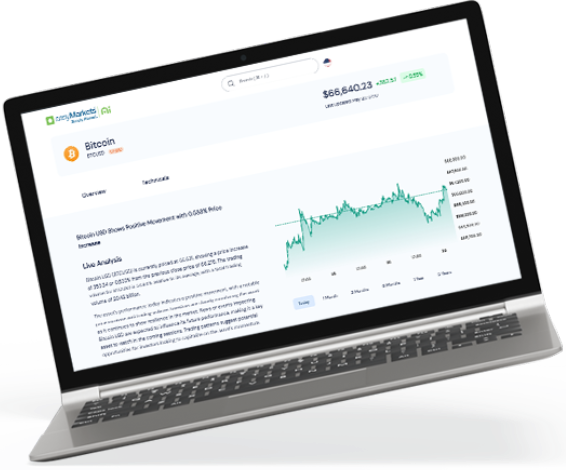Conquer the Ego: Preventing Overconfidence Bias in Trading

Last month, we explored Fear and Greed in trading, along with the previous July record high of Gold prices at around the area of $2,483. This month, we’ll be looking at a different tale. Despite the blazing hot hype around AI-darling Nvidia and the tech giant’s reporting of record growth in their latest second-quarter financial results for 2025 released on August 28, 2024, with a staggering 152% increase in Earnings per Share and a 122% rise in revenue, their stock took an unexpected dip. With this in mind, our focus today at Victory Vanguard shifts to a critical aspect that every trader encounters but often overlooks: Overconfidence.
With this in mind, our focus today at Victory Vanguard shifts to a critical aspect that every trader encounters but often overlooks: Overconfidence.
What is Overconfidence Bias?
Overconfidence Bias is a cognitive trap that can cloud judgment. Although a generally disruptive trait that can lead to some catastrophic consequences in everyday life, this characteristic can be equally dangerous when it comes to trading.
Essentially, this cognitive Bias in trading is when traders think they're more skilled at predicting the market than they really are, which can often lead to risky trading decisions. The cognitive trap can mislead these traders, leading to potentially expensive mistakes.
As the saying goes, ‘Pride comes before the fall’, and Nvidia’s performance is a crystal-clear example of this.
Navigating the market
It was the report every trader and investor was eagerly anticipating, with their eyes glued onto their screens, sitting at the very edge of their seats. Nvidia reported record-breaking revenues of $30 billion. Yet, despite these impressive results, its stock value dropped significantly, falling 6.4%.
Why? Investors, expecting even more, saw this as an opportunity to lock in (or cash in) their gains.
What caused these gains though?
Exploring Nvidia’s market dominance
Nvidia's dominance in the AI chip market is no accident — it’s the result of years of innovation and strategic positioning dating back to 2016. Their GPUs (Graphics Processing Units) are tailor-made for AI tasks, handling thousands of operations simultaneously, making them the go-to choice for AI developers.
Nvidia’s early focus on AI and their creation of Compute Unified Device Architecture (CUDA), a platform that allows developers to leverage their powerful GPUs, solidified their position as a leader in the field. Major tech giants like Google, Amazon, and OpenAI have heavily relied on Nvidia’s technology to power their AI advancements, contributing to the company’s explosive growth.
In Q2, Nvidia's revenue skyrocketed due to the surge in demand for their AI chips. As industries worldwide accelerate their AI development, Nvidia’s GPUs have become an essential tool, enabling companies to push the boundaries of what AI can achieve. CUDA has further amplified this, making it easier for developers to integrate Nvidia’s hardware into their projects, fuelling even more demand for their chips.
This growing demand translated directly into Nvidia’s impressive Q2 financial results, with revenue soaring 122%. The company's performance caught the attention of investors, who, seeing Nvidia’s meteoric rise, eagerly poured money into its stock.

With the tech giant’s all-compassing role in pioneering AI, Nvidia CEO Jensen Huang was in turn dubbed as the tech industry’s Taylor Swift, with investors closely tracking his every move and speech, emulating the influence and chokehold the US megastar has in her own industry.
Understanding what powered the drop
However, as Nvidia's stock soared over 150% in 2024 while also achieving record revenues, its stock took a surprising tumble. The root cause? Investor expectations and the realities of sustaining high growth rates. Nvidia's Q2 results actually exceeded Wall Street predictions, with a particularly strong performance in its AI data centre segment, where revenue more than doubled. Yet, shares dropped significantly.
Why the downturn? Primarily, the stock's dramatic rise earlier in the year set a high bar. Nvidia's stock had already increased by over 150%, making it the top performer in the S&P 500. This rapid and exceptional ascent led investors to expect even more spectacular growth.
While the latest earnings report did indicate continued growth, it did so at a slower rate. The reality failed to reflect investors’ Overconfidence Bias that Nvidia stock would skyrocket even higher and did not satisfy them, as they were anticipating even more extraordinary results. Nvidia's adjusted gross margin also witnessed a decline from 78.9% to 75.7%, signalling potential challenges in maintaining profitability.
Sensing a potential plateau in Growth, these investors then saw this development as an opportunity to cash in on past gains from the stock’s meteoric rise, leading to a correction driven more by a capitalization trading strategy rather than a reflection on Nvidia’s fundamentals.
Nvidia stock then took a hit of 6.4% in trading the day after the Earnings announcement on August 29, 2024
Mastering the behaviour

Overconfidence played a significant role in the development of Nvidia's stock movements. This Bias, often referred to as the Overconfidence effect, happens when people overestimate their abilities, leading to decisions that don’t always reflect reality. In trading, this cognitive bias can cause investors to believe they have more control or insight than they actually do. Investors who fell victim to the Overconfidence Bias during Nvidia's rise likely believed the stock’s upward momentum would continue indefinitely, overlooking the potential for a steep drop in value.
How the Overconfidence Bias drives trades
This drop, of course, never would have appeared to be the case if we were to rewind a few months back.
In late 2023, Nvidia stock soared to unprecedented levels, fuelled by optimism. Many investors, driven by Overconfidence, believed they had a better understanding of Nvidia’s future growth than others. They became convinced that the stock would continue its upward trajectory, despite signs of overvaluation and broader market trading risks. The illusion of control — thinking they could time their trading perfectly, especially when day trading pushed many to increase their exposure, believing they could ride Nvidia’s wave indefinitely.
This behaviour mirrors the common traits of this ego-driven behaviour:
- the illusion of control
- over ranking of personal ability
- timing optimism
Investors thought they could manage their positions better than the market itself, leading them to hold onto their Nvidia shares even when warning signs of a bubble became evident. When Nvidia’s stock experienced a sharp drop, the same Bias was at play. Investors clung to their positions, convinced the downturn was temporary and that the stock would rebound quickly. The illusion of control made them believe they could predict when the price would stabilize, leading many to hold on too long and miss the opportunity to minimize losses.
In this case, ego-driven thinking that pushed traders to buy Nvidia at its peak also prevented them from reacting appropriately to its decline. The Overconfidence Bias not only caused traders to buy into Nvidia at inflated levels but also led to underestimating the trading risks of a market correction. As a result, they were blindsided by the rapid drop, making Nvidia’s fall as much a product of the Overconfidence Bias as its initial rise.
Example of Overconfidence Bias
Overconfidence is nothing new when it comes to trading though.
One of the most well-known examples of the Overconfidence Bias in trading dates all the way back to the late 90s: the dot-com bubble. During this period, investors were swept up by the internet revolution, believing they had unique insights into which tech startups would dominate the future. Stocks of companies with little to no revenue — like Pets.com, which sold pet supplies online, and Webvan, an online grocery delivery service — soared based purely on excitement over the internet’s potential.
Overconfidence Bias manifested in several key ways. First, many investors overestimated their ability to pick winners, thinking they had an exceptional understanding of these unproven companies’ future prospects. Traders ignored fundamental trading risks, driven by the illusion of control, believing they could time the market to maximize profits. There was also a lot of timing optimism, as investors assumed the rapid rise of tech stocks like Webvan and Pets.com would continue indefinitely.
When the bubble burst in 2000, stocks of these companies collapsed — Pets.com and Webvan both went bankrupt, leaving investors with huge losses. Many traders, blinded by Overconfidence, failed to see the warning signs and held on to their positions, convinced the downturn was temporary.
Conquering the emotion

As we’ve seen above, unhelpful thinking patterns like the ego-driven mindset can be your greatest enemy — not just in trading, but in life. This cognitive bias can derail even the most promising traders, preventing them from reaching their full potential.
But how do you conquer this Bias when it stems from your very own mind?
The answer lies in understanding and conquering the emotion. By practicing self-awareness, taming the tiger of ego with a healthy dose of humility, and using proven strategies to counter Overconfidence, you can regain control over your bias and avoid falling into the same mental traps.
Fear not — there’s hope, and it starts with you.
How to overcome Overconfidence Bias in trading
Overcoming this cognitive Bias mostly requires a disciplined mental approach.
Start by practicing self-reflection.
Consistently assess your assumptions and Overconfidence Bias to ensure they're based on evidence rather than ego.
Use decision-making frameworks.
Introduce yourself to structure, helping to objectively evaluate potential outcomes and trading risks.
Embrace humility.
Recognise that the market is unpredictable, that you are not an all-knowing superhuman, and that no one — including yourself — is immune to mistakes.
Surround yourself with different perspectives.
If you sink into the sinkhole of yes-men who praise and mindlessly agree with your every move, you’ll never break free of your own flawed thinking and will fall pray to the Confirmation Bias (looking for information that confirms your pre-existing beliefs).
Look for disconfirming evidence — especially when it challenges your existing beliefs. This will ensure you're not blinded by Overconfidence.
Practical tips to control the Overconfidence Bias
Of course, it’s not always the thought that counts — what matters is what we do with our thoughts. After all, actions speak louder than words, or in this case, thoughts.
Here’s a few practical tips on keeping your ego in check when trading:
Record and review your trading and outcomes.
You'll gain critical insights into your strengths and weaknesses, which will ultimately guide better decision-making.
Set limits on how much trading risk you’re willing to take – especially when using leverage. Stick to the original trading plan you committed to, no matter how tempting it is to deviate for an attractive opportunity.
Winning wisdom wrap up
The Overconfidence Bias can be a trader's silent saboteur, clouding judgment and leading to risky trading decisions.
When the Overconfidence Bias kicks in:
Pause and reflect on your assumptions, ensuring your decisions are grounded in facts, not ego.
Stick to your trading plan, even when tempted to chase perceived opportunities or double down on risky trading.
Seek diverse perspectives and look for evidence that challenges your beliefs, keeping your approach balanced.
Conquering the Overconfidence Bias is about maximizing growth by staying grounded, informed, and humble in your approach. With these strategies, you can turn Overconfidence from a threat into an opportunity for continual improvement.
Final thoughts
Since Nvidia’s Q2 2025 earnings announcement, the stock has seen further dramatic swings. Apart from the initial 6% drop, Nvidia had lost $279 billion in market value by September 3, 2024, fuelled by investor concerns over unmet expectations despite strong results. CEO Jensen Huang addressed these concerns at the Goldman Sachs Technology Conference, emphasizing strong demand for AI chips. His reassurances paid off—the stock rebounded 8% on September 12, driven by renewed optimism around AI and future opportunities.
The story of Nvidia’s rally, correction, and rebound isn’t over yet though. With the AI landscape constantly evolving, the impact of overconfidence on stock markets will continue to present both opportunities and challenges for Nvidia. The question remains: how will you navigate these waves without letting Overconfidence steer you off course?
It’s not just Nvidia’s stock that offers a lesson — this is a wake-up call for all traders. In a trading market driven by hype and rapid advancements, self-awareness is your strongest asset. Whether you’re managing tech stocks or any other investment, staying grounded, informed, and open to new perspectives will help you conquer ego-driven decisions and, ultimately, lead to smarter, more resilient trading strategies.
Disclaimer: Please note that the information provided in this article was accurate at the time of writing. Market conditions and economic data can change rapidly. This content is intended for informational purposes only and should not be used as the sole basis for making financial decisions.

Last month, we explored Fear and Greed in trading, along with the previous July record high of Gold prices at around the area of $2,483. This month, we’ll be looking at a different tale. Despite the blazing hot hype around AI-darling Nvidia and the tech giant’s reporting of record growth in their latest second-quarter financial results for 2025 released on August 28, 2024, with a staggering 152% increase in Earnings per Share and a 122% rise in revenue, their stock took an unexpected dip. With this in mind, our focus today at Victory Vanguard shifts to a critical aspect that every trader encounters but often overlooks: Overconfidence.
With this in mind, our focus today at Victory Vanguard shifts to a critical aspect that every trader encounters but often overlooks: Overconfidence.



















